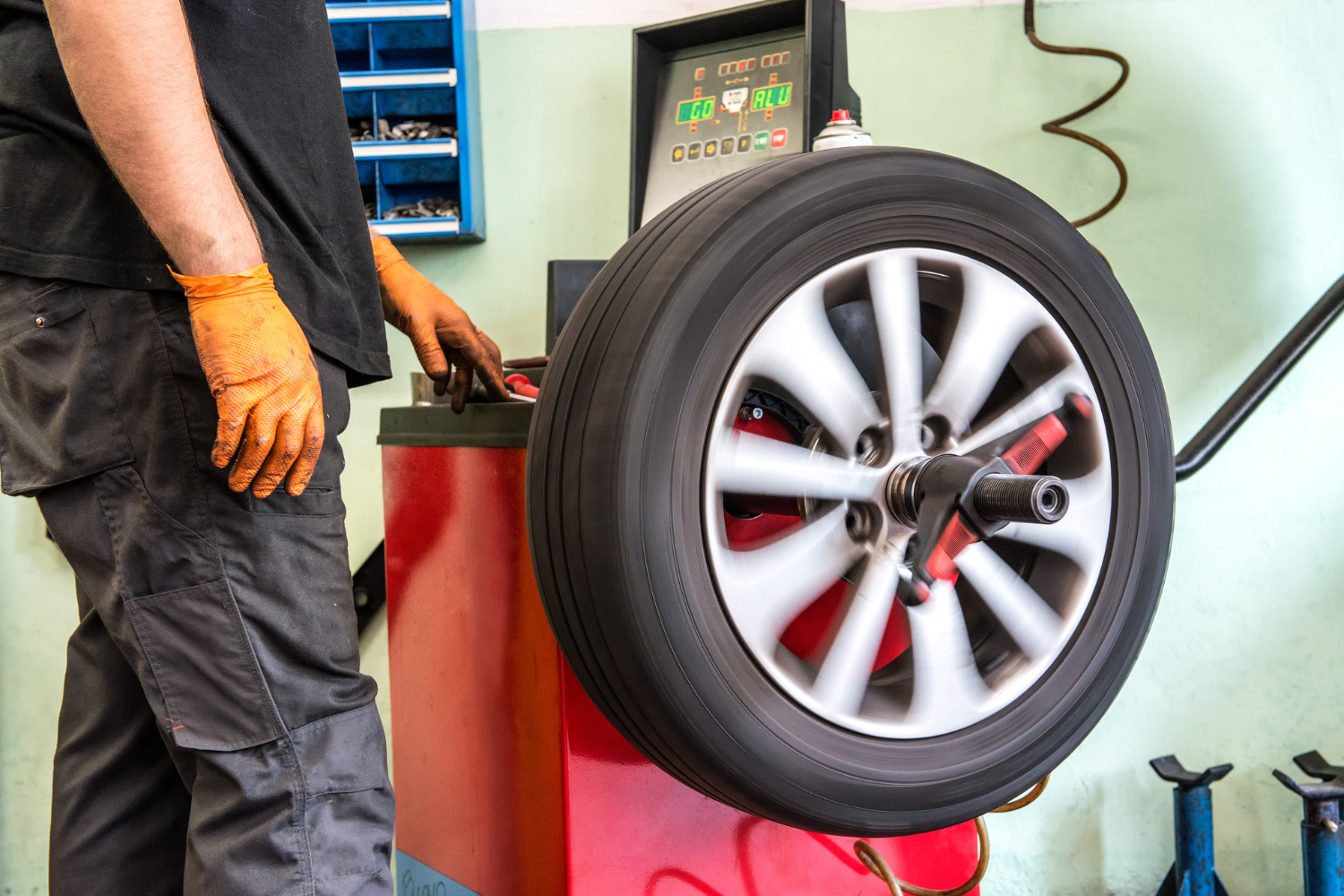Traditional Balancing vs. Road Force Balancing
April 21, 2023
Maintenance

Traditional Balancing vs. Road Force Balancing
You may already be aware that there are various techniques used to balance your wheels if you are familiar with tire balancing. Static balancing is a common technique that includes adding little weights to the rim to balance out any asymmetries. Road force balancing, on the other hand, is a different approach that is becoming more and more common. The distinctions between conventional balancing and road force balancing will be discussed in this blog post.
Static Balancing:
As was previously indicated, static balancing involves adjusting any imbalances by adding minor weights to the rim. To accomplish this, the tire and wheel assembly is spun on a balancer, which locates the heavy areas and marks the region where weights ought to be added. For the majority of cars, static balancing can be beneficial, but it ignores some significant elements that may have an impact on tire and wheel balance.
Road Force Balancing:
Road force balancing is a more sophisticated technique that can find imbalances that standard balancing cannot and can remedy them. This technique makes use of a device that exerts a controlled force against the rotating tire and wheel assembly. As the tire comes into contact with the road, it receives a force similar to that. As the wheel and tire combination is spun, the machine measures the force needed to do so and may identify any regions where the tire or wheel is not exactly round.
How Road Force Balancing Can Help Extend the Life of Your Tires
Your car’s tires are possibly the most important parts when it comes to driving. They are in charge of supplying traction, absorbing shock, and preserving road stability. Without proper tire maintenance, not only does your car’s performance suffer, but your safety may also be in jeopardy. Road force balancing is one of the best ways to make sure your tires operate at their best.
What is Road Force Balancing?
Road force balancing measures the force variance that occurs as your tires and wheels rotate. It entails mounting your wheels and tires to a road force balancing device, which analyzes the regularity of the load distribution and detects any vibrations or flaws. Once found, the machine can exert force on the tire to correct any imbalances and offer a more comfortable ride.
How Does It Work?
Machines used for road force balancing exert force on your tire as it rotates to simulate the tire’s contact with the road. Any high or low points on the tire and wheel assembly that can result in vibrations while driving will be detected by the machine. It will then suggest remedies like shifting the tire’s position on the wheel or adding weight to the wheel. The end effect is a smoother ride and less tire damage.
Road Force Balancing vs. Wheel Alignment: Which One Do You Need?
Tire care is crucial for preserving the performance and safety of your car. Wheel alignment and road force balance are two essential components of tire maintenance. The distinction between these two services must be understood to choose which one your car requires because they are frequently mistaken.
What is Wheel Alignment?
Wheel alignment is the process of adjusting your car’s suspension system so that the wheels are perpendicular to the ground and parallel to each other. It entails modifying the wheel angles to satisfy the manufacturer’s requirements, which enhances the car’s handling, stability, and fuel economy.
Camber, caster, and toe are the three main changes in wheel alignment. When viewed from the front of the vehicle, the wheel’s inward or outward tilt is called a camber. The caster describes the steering axis’s forward or backward angle when seen from the side of the car. As viewed from above, the toe refers to the angle between the tires and can be either positive (tires point in the same direction) or negative (tires point in the opposite direction).
The Differences Between Wheel Alignment and Road Force Balancing
Road force balancing and wheel alignment are two separate services that take care of different problems with the tire and wheel assembly on your car. Although road force balancing corrects any high or low places on your tire and wheel assembly, wheel alignment ensures that your car’s suspension system is in good operating order and that your wheels are positioned correctly.
Camber, caster, and toe are the three main changes in wheel alignment. These modifications guarantee that your tires wear uniformly, your car handles properly, and your fuel efficiency maximizes. Road force balancing, on the other hand, concentrates on adjusting any high or low locations on your tire and wheel assembly. Minimizing vibrations by moving parts guarantees that your tires wear evenly and makes for a smoother ride.
Which One Do You Need?
The response to this query depends on the symptoms your car is showing. You probably need a wheel alignment if you notice that your car is dragging to one side, your steering wheel is out of alignment, or your tires are wearing unevenly. These signs of an out-of-alignment in your suspension system may result in uneven tire wear and a reduction in the handling and stability of your car.
How Does Road Force Balancing Extend the Life of Your Tires?
Road force balancing can significantly extend the life of your tires in several ways:
Reduces Tire Wear
One of its main advantages is that road force balancing lessens uneven tire wear. Without proper balance, your tires will wear unevenly and develop bald areas on their surface.
This uneven wear could jeopardize your safety while driving, which can result in early tire failure and even blowouts. By ensuring that your tires wear evenly, road force balancing increases the life and functionality of your tires.
Improves Vehicle Performance
The performance of your car can also be enhanced by road force balancing. You could experience vibrations while driving if your tires are out of balance, which can alter how your car handles and how stable it is. This could endanger your safety and make driving uncomfortable, especially at high speeds. Road force balancing ensures that your tires operate at their peak efficiency, resulting in a smoother ride and better handling and stability for your car.
Saves You Money
Long-term financial savings are another benefit of road force balance.
Road Force Balancing at Trail Tire Auto Centers
At Trail Tire Auto Centers, we proudly offer Road Force Balancing services to our customers. Our state-of-the-art equipment and experienced technicians can identify and correct any imbalances in your tires, ensuring a smooth and safe driving experience. Book an appointment at your local Trail Tire or call to speak to a service advisor about the process.
Back

